Let’s delve into the numbers behind their size, including weight and height averages. We’ll explore their distinct physical traits, such as vibrant colors, unique coats, and sturdy body structures. Uncover the advantages of raising Kolbroek pigs for farming, from their adaptability to their mouthwatering meat. On the flip side, we’ll also unveil the challenges of keeping them as pets. Learn about their temperament, dietary needs, common health concerns, and reproduction facts. Finally, we’ll explore the profitability and market demand for Kolbroek pig farming.
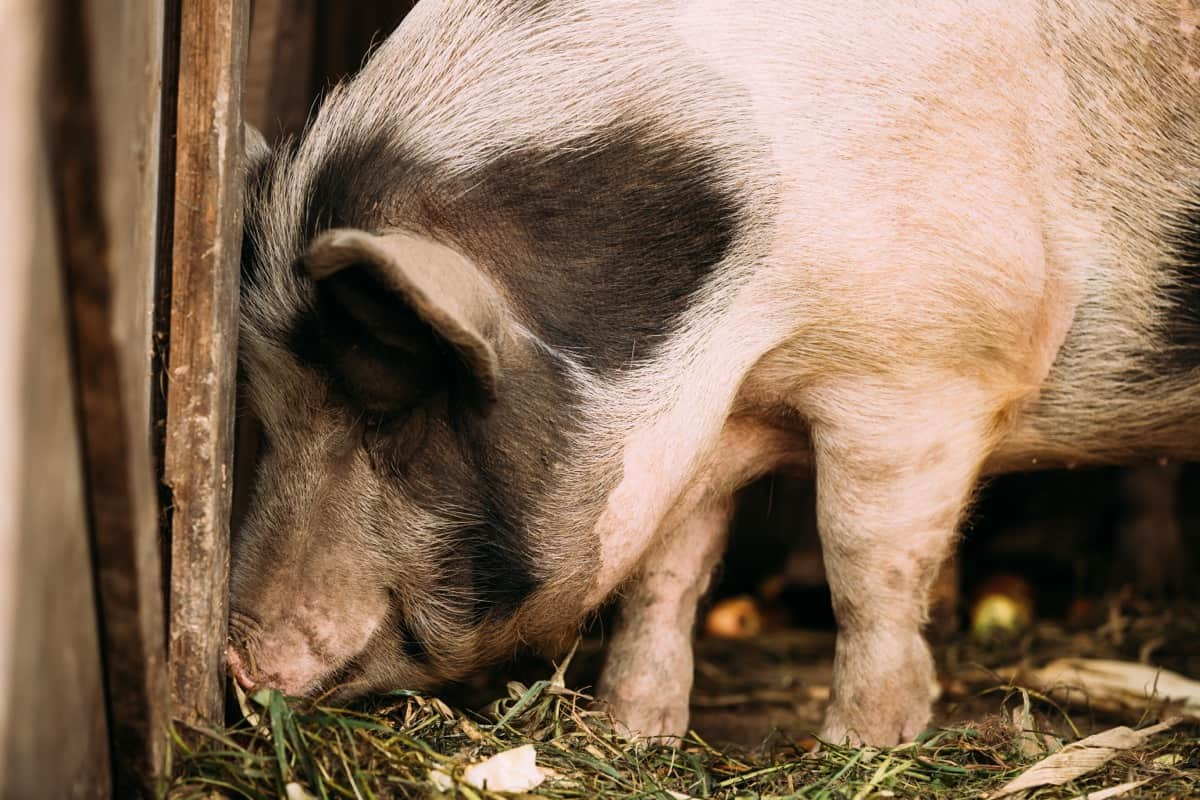
Kolbroek Pig Facts
Introduction to Kolbroek Pig Breed
The origin of the Kolbroek pig, a fascinating indigenous breed from South Africa, remains a mystery. Two theories exist regarding its origins. One suggests that the name “Kolbroek” originated from the shipwreck of the Coalbrook in 1778, where pigs were saved and gave rise to the breed. Another theory proposes that Portuguese explorers, possibly from China, introduced the pigs during the 15th century.
Kolbroek pigs are known for their foraging abilities and resilience, exhibiting greater immunity to diseases than other breeds. The sows are good mothers, producing ample milk for their litters of six to nine piglets. The breed is versatile, suitable for small farms and crossbreeding with other breeds like Duroc and Large White for improved performance. Kolbroek pigs are highly valued for marketing their progeny at 90-100 days of age.
Kolbroek Pig Origin and History
- The first theory suggests that the breed originated from pigs aboard the Coalbrook, a ship wrecked on the Cape coast in 1778.
- The second theory proposes that Portuguese explorers introduced pigs during the 15th century, potentially using them for bartering purposes. These pigs were believed to have Chinese origins.
- The third theory relates the breed’s name to the spots on their hams, with “kok” meaning spot and “broek” referring to ham in Afrikaans.
- The Kolbroek breed exhibits a fair level of uniformity and is widely recognized as an indigenous breed. Its distinct characteristics have made it a unique and valuable part of South Africa’s pig farming heritage.
In case you missed it: Tamworth Pig Facts: Origin, Size, Physical Characteristics, Pros, and Cons
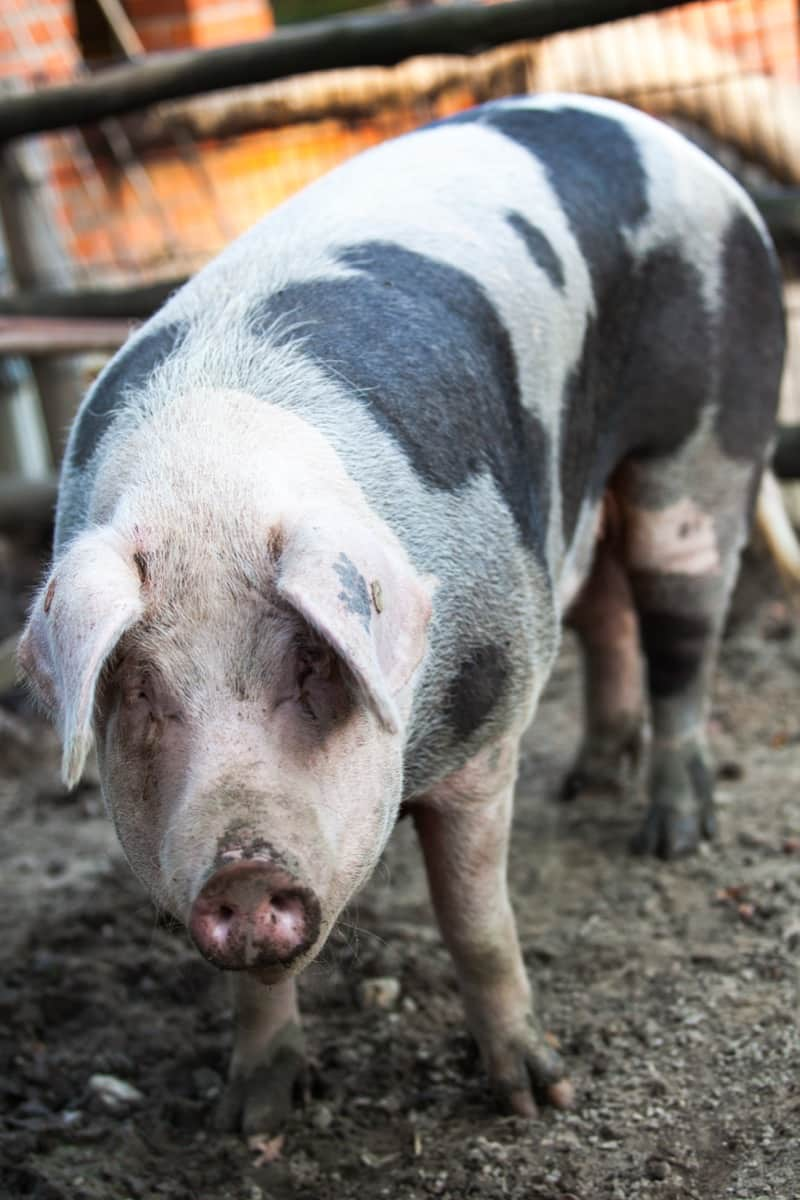
Size of Kolbroek Pigs: Average Weight and Height
When fully grown, Kolbroek pigs generally have an average weight ranging from 150 to 200 kilograms (330 to 440 pounds). In terms of height, they typically measure around 60 to 70 centimeters (24 to 28 inches) at the shoulder. It’s important to note that individual variations within the breed can result in slight deviations from these average measurements.
Physical Characteristics of Kolbroek Pigs
- Color: The breed exhibits various color variations, including black with white legs, grey, or light ginger with grey or white legs. Prominent round white spots are typically present on the flanks and hindquarters. When agitated, the long mane on their bodies stands on end.
- Head: The face profile is concave, accompanied by medium-sized ears that are laterally oriented. The snout is short.
- Neck: The neck is short and broad.
- Back and Loin: The back and loin are short, broad, and compact.
- Body: Kolbroek pigs have a small body frame with a characteristic potbelly. The fat belly, rich in lard/fat, almost touches the ground.
- Sides: Although short, the sides of the pig are deep.
- Hams: The hams are relatively well-developed.
- Legs: The legs are short and feature fine bones. Despite their short stature, Kolbroek pigs are excellent walkers. Their dark-colored hooves can grow substantially if not given enough exercise.
- Tail: The tail is of medium length and straight.
- Temperament: The Kolbroek pig is known for its docile nature and resilience to stress.
In case you missed it: Auckland Island Pig Facts: Origin, Size, Physical Characteristics, Pros, and Cons
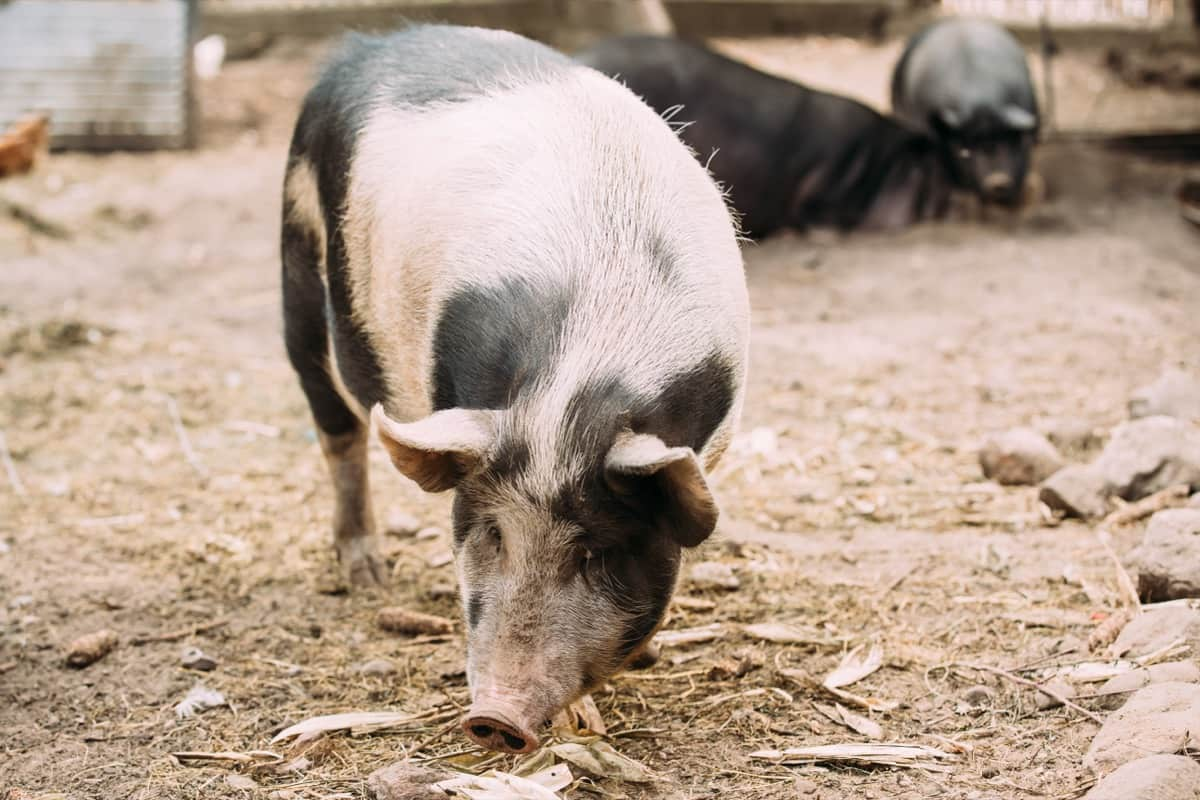
Pros of Raising Kolbroek Pigs for Farming
- Adaptability: Kolbroek pigs exhibit exceptional adaptability to various environments and management systems. They can thrive in different climatic conditions and adapt well to free-range or extensive farming systems.
- Foraging Abilities: These pigs are excellent foragers, capable of efficiently utilizing pasture, fallen fruit, and crop residues. This helps reduce feed costs and promotes sustainable farming practices.
- Disease Resistance: Kolbroek pigs possess a higher resistance level to common pig diseases than some improved breeds. Their robust nature and hardiness contribute to lower veterinary expenses and reduced medication reliance.
- Reproduction and Mothering Skills: Kolbroek sows are known for their moderate prolificacy and exceptional mothering abilities. They tend to have large litters with good survival rates, ensuring a consistent supply of piglets for farming operations.
- Meat Quality: The meat from Kolbroek pigs is renowned for its excellent flavor and marbling, resulting in tender and juicy pork. This quality makes it highly sought after by consumers and can contribute to higher market prices.
- Crossbreeding Potential: Kolbroek pigs can be effectively crossbred with other breeds to enhance specific traits like growth rate, feed efficiency, and carcass quality. Farmers can tailor the breed to their specific production goals and market demands.
Cons of Keeping Kolbroek Pigs as Pets
- Physical Characteristics: Some individuals may find the breed’s low-hanging underline or excessively long grown-out claws undesirable. Additionally, an overwhelmingly white or black coat color, along with a lack of pigmentation in specific areas such as the nose, eyes, ears, underline, vulva, and testicles, may not appeal to everyone.
- Disqualifications: Certain characteristics can disqualify a pig from breed standards, including ill or bad temperaments, color patterns deviating more than 30% from the standard, uneven or very small testicles, a small and upturned vulva, and visible genetic abnormalities.
In case you missed it: Australian Yorkshire Pig Facts: Origin, Size, Physical Characteristics, Pros, and Cons
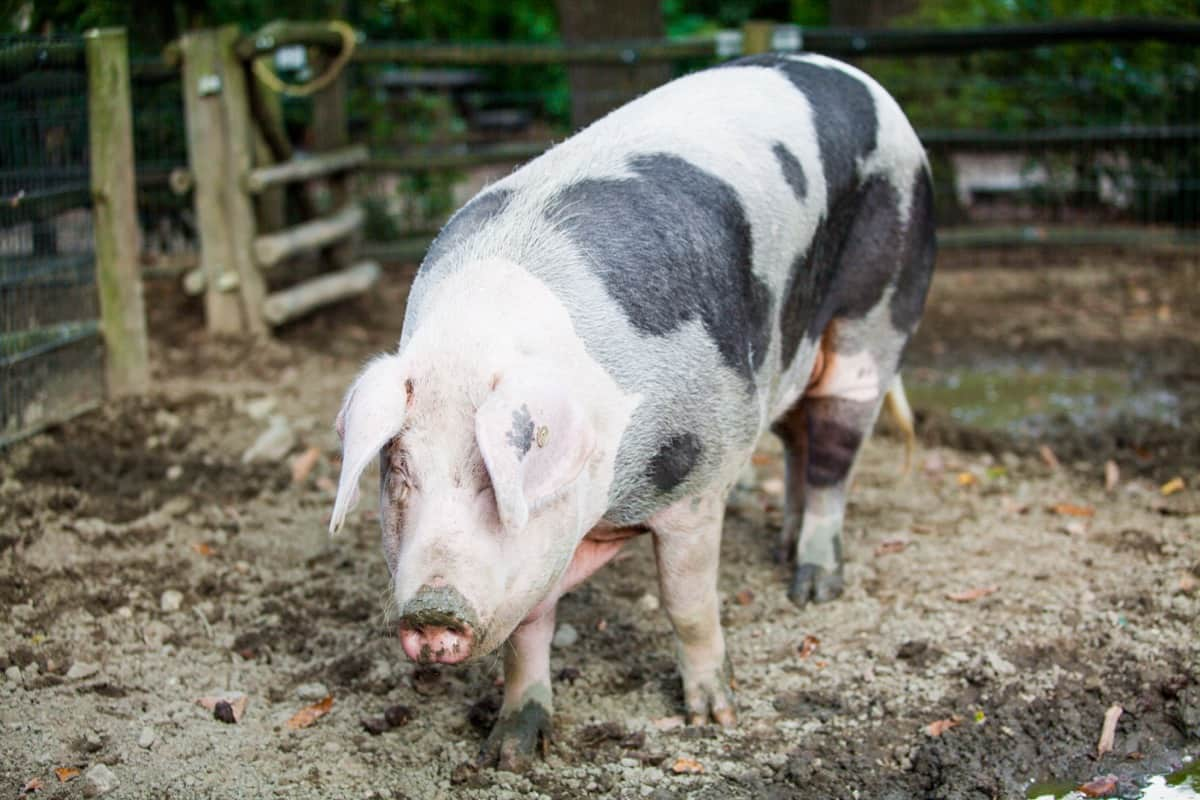
Kolbroek Pig Breed Information: Temperament and Behavior
The Kolbroek pig breed is known for its docile and friendly temperament, making it easier to handle and work with. They are generally calm, non-aggressive, and adaptable to various management systems. Their gentle nature makes them suitable for small farms and homesteads.
Kolbroek pigs are social animals that thrive in group settings, enjoying the companionship of their fellow pigs. They also exhibit good maternal instincts, being attentive and caring to their piglets. However, as with any animal, individual variation in temperament can occur, so proper handling, socialization, and care are essential to foster positive behavior and a harmonious environment.
Normal Production and Environment for Kolbroek Pig
Kolbroek pigs thrive in temperate to warm climates and are commonly raised in rural villages where they excel as foragers. They have adapted well to these environments. Regarding breed and performance information, Kolbroek pigs typically reach a mature weight of less than 110kg. They can breed at around 12 months of age, allowing for early reproduction.
The average litter size for Kolbroek pigs ranges from 7 to 8 piglets, indicating moderate fertility. This breed is well-suited for small-scale farming operations and can provide a sustainable source of meat production in the appropriate production environment. Their ability to adapt to local conditions and moderate size make them attractive for farmers seeking a versatile and efficient pig breed.
Kolbroek Pig Diet and Nutrition Requirements
- Foraging Ability: Kolbroek pigs possess a natural inclination for foraging and are adept at utilizing root and leaf crops, making them excellent grazers in free-range systems.
- High Roughage Conversion: They are efficient converters of high roughage rations, meaning they can effectively digest and derive nutrients from fibrous feed sources.
- Surplus Fat Utilization: Kolbroek pigs can accumulate fat, which can be harvested and sold as lard and crackling, providing additional economic opportunities.
- Balanced Temperament: Their docile temperament contributes to stress tolerance and makes them more adaptable to changes in their diet or environment.
Health Issues in Kolbroek Pigs: Common diseases and Preventive Measures
- Respiratory Infections: Pigs are prone to respiratory illnesses such as pneumonia. Proper ventilation, regular cleaning of living spaces, and vaccination against common respiratory pathogens can help prevent these infections.
- Parasitic Infestations: External parasites like mites and lice, as well as internal parasites like worms, can affect the health of Kolbroek pigs. Regular deworming and maintaining clean living conditions are crucial preventive measures.
- Foot and Hoof Issues: Kolbroek pigs can develop foot and hoof problems, such as cracks or abscesses. Regular hoof trimming and ensuring dry and clean flooring can help prevent these conditions.
- Digestive Disorders: Kolbroek pigs may encounter digestive issues like diarrhea or bloating. Providing a balanced diet, avoiding sudden feed changes, and ensuring access to clean water can minimize the risk of such disorders.
- Routine Vaccinations: Following a proper vaccination schedule helps protect Kolbroek pigs against diseases like swine fever, erysipelas, and leptospirosis.
In case you missed it: Pietrain Pig Facts: Origin, Size, Physical Characteristics, Pros, and Cons
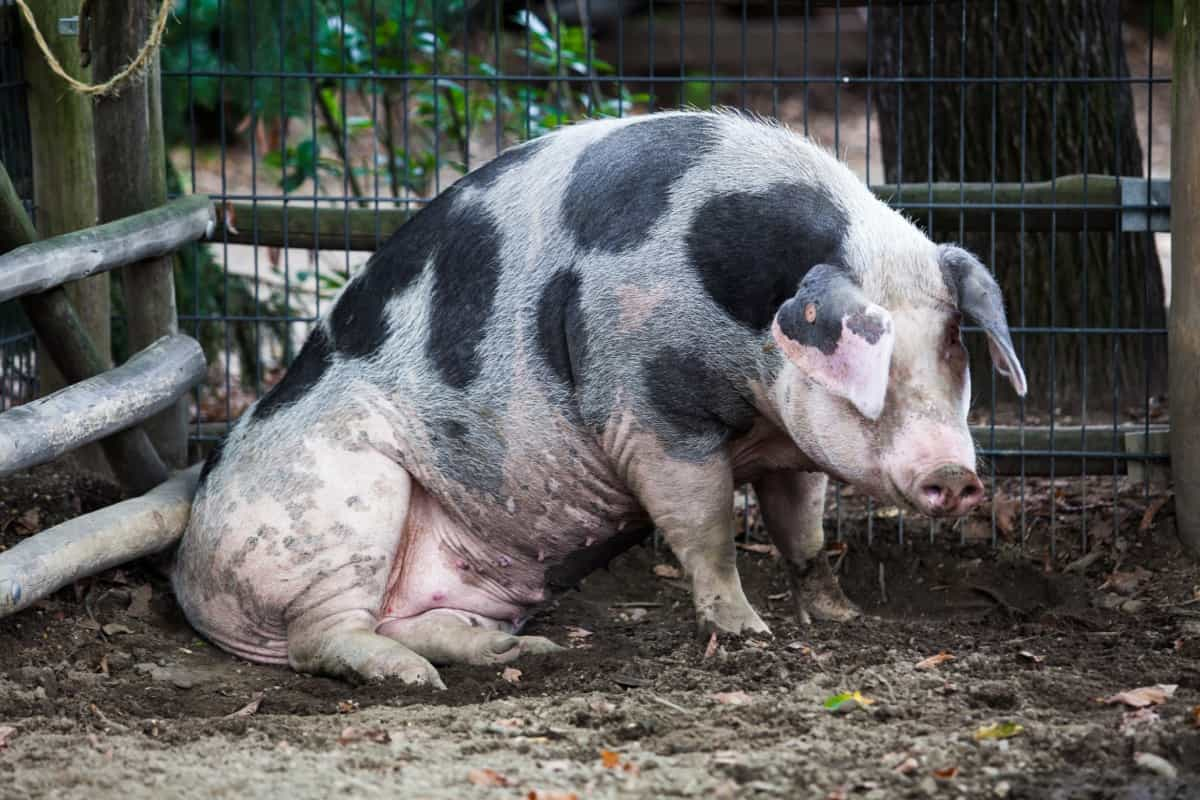
Kolbroek Pig Reproduction and Breeding Facts
The Kolbroek pig, a medium-sized breed, is primarily black with occasional pink spots and patterns. They have short tails, snouts, erect ears, and a distinctive dish-faced head. Their hardiness makes them well-suited for small-scale farming. Despite slower growth than modern breeds, they mature early and have thicker back fat at 222 days. This locally adapted breed has remained genetically unchanged for nearly a century.
Their smaller size and non-aggressive nature make them easier to manage than many other pig breeds. They thrive in free-range and free-farrow environments and exhibit excellent mothering abilities. The origin of the Kolbroek pig has different theories, including Portuguese traders introducing them in the 15th century and a shipwrecked vessel called the “Coalbrook” in 1778. It is believed that these pigs originated in China, and the name “Kolbroek” may stem from the distinctive spots on their hams.
While the Kolbroek pig was once prevalent on small farms throughout South Africa, scattered populations can be found in various regions today. This breed is known for its dark, flavorful meat, although it can be fatty depending on the management system. While it is commonly used for fresh meat, it has also been historically used for sausages, bacon, ham, and soap production.
The Kolbroek pig is unsuitable for industrialized piggeries due to its smaller litter size, higher fat content, and overall smaller size than commercial breeds. However, it has gained recognition as an indigenous breed, and some producers have been championing its preservation and promoting the benefits of farming with this breed on small-scale farms.
The unique characteristics, local traditions, and expertise associated with the Kolbroek pig are part of the Ark of Taste, a Slow Food initiative to preserve and raise awareness about traditional products. The efforts of the Slow Food network have contributed to the documentation and sharing of this breed’s importance, ensuring its legacy continues for future generations.
Kolbroek Pig Farming: Profitability and Market Demand
- Kolbroek pig farming can be profitable due to various factors. The breed’s unique characteristics, such as its suitability for free range systems, efficient conversion of roughage rations, and excellent mothering abilities, contribute to its appeal. The smaller size and docile temperament of Kolbroek pigs make them easier to manage, particularly for small-scale farmers.
- The market demand for Kolbroek pigs can vary. While they may not meet the requirements of industrialized piggeries due to factors like smaller litter sizes and fattiness, there is a niche market for this indigenous breed.
- Some consumers value the dark, flavorful meat of Kolbroek pigs, which can be used for fresh meat, sausages, bacon, ham, and even soap making. The breed’s historical significance and cultural heritage also attract those interested in preserving local breeds.
- To maximize profitability in Kolbroek pig farming, it is essential to identify and target the right market. Connecting with local communities, farmers’ markets, and specialty food stores that appreciate traditional and indigenous breeds can help create a steady customer base.
- Building relationships with these markets and promoting the unique qualities of Kolbroek pigs can lead to higher prices and increased demand.
In case you missed it: Successful Pig Farm Management and Operational Strategies: A Complete Guide
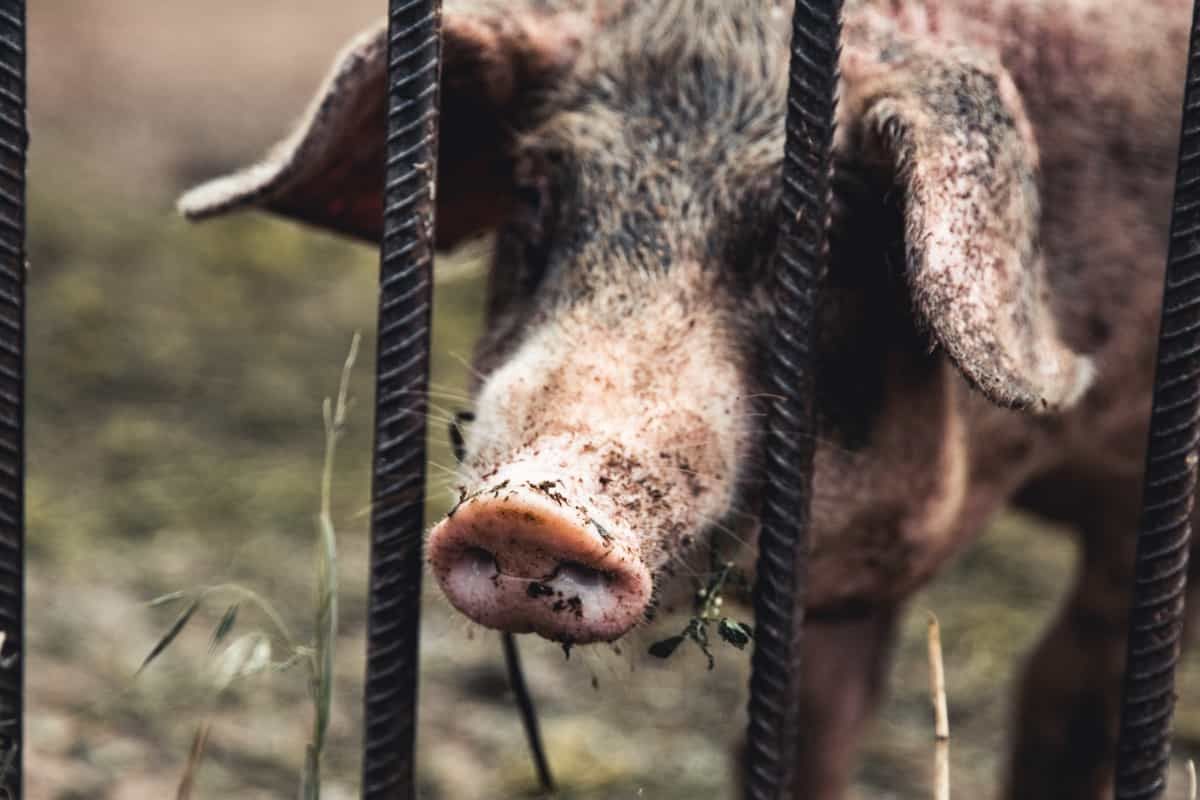
Conclusion
The Kolbroek pig is an indigenous breed from South Africa with a mysterious origin. It has a medium size, unique physical characteristics, and offers advantages like foraging abilities and docile temperament, while potential challenges include limited market demand and specific breeding requirements.
- Types of Pesticides Used in Agriculture: A Beginner’s Guide
- Economical Aquaculture: A Guide to Low-Budget Fish Farming
- 15 Common Planting Errors That Can Doom Your Fruit Trees
- How to Make Houseplants Bushy: Effective Tips and Ideas
- Innovative Strategies for Boosting Coconut Pollination and Yield
- Pollination Strategies for Maximum Pumpkin Yield
- The Complete Guide to Chicken Fattening: Strategies for Maximum Growth
- Natural Solutions for Tulip Problems: 100% Effective Remedies for Leaf and Bulb-Related Issues
- Revolutionizing Citrus Preservation: Towards a Healthier, Greener Future
- Natural Solutions for Peony Leaf and Flower Problems: 100% Effective Remedies
- Maximizing Profits with Avocado Contract Farming in India: A Comprehensive Guide
- Natural Solutions for Hydrangea Problems: 100% Effective Remedies for Leaf and Flowers
- The Ultimate Guide to Choosing the Perfect Foliage Friend: Bringing Life Indoors
- From Sunlight to Sustainability: 15 Ways to Use Solar Technology in Agriculture
- The Ultimate Guide to Dong Tao Chicken: Exploring from History to Raising
- The Eco-Friendly Makeover: How to Convert Your Unused Swimming Pool into a Fish Pond
- Mastering the Art of Delaware Chicken Farming: Essentials for Healthy Backyard Flocks
- 20 Best Homemade Fertilizers for Money Plant: DIY Recipes and Application Methods
- How to Craft a Comprehensive Free-Range Chicken Farming Business Plan
- Brighten Your Flock: Raising Easter Egger Chickens for Beauty and Bounty
- How to Optimize Your Poultry Egg Farm Business Plan with These Strategies
- Subsidy for Spirulina Cultivation: How Indian Government Schemes Encouraging Spirulina Farmers
- Ultimate Guide to Raising Dominique Chickens: Breeding, Feeding, Egg-Production, and Care
- Mastering the Art of Raising Jersey Giant Chickens: Care, Feeding, and More
- Ultimate Guide to Raising Legbar Chickens: Breeding, Farming Practices, Diet, Egg-Production
- How to Raise Welsummer Chickens: A Comprehensive Guide for Beginners
- How to Protect Indoor Plants in Winter: A Comprehensive Guide
- Ultimate Guide to Grow Bag Gardening: Tips, Tricks, and Planting Ideas for Urban Gardeners
- Guide to Lotus Cultivation: How to Propagate, Plant, Grow, Care, Cost, and Profit
- Agriculture Drone Subsidy Scheme: Government Kisan Subsidy, License, and How to Apply Online
- Ultimate Guide to Raising Araucana Chickens: Breed Profile, Farming Economics, Diet, and Care
- Bringing Hydroponics to Classroom: Importance, Benefits of Learning for School Students
- Ultimate Guide to Raising Polish Chickens: Breed Profile, Farming Economics, Diet, and Care
- Ultimate Guide to Raising Australorp Chickens: Profile, Farming Economics, Egg Production, Diet, and Care
- Silkie Chicken Farming: Raising Practices, Varieties, Egg Production, Diet, and Care
- Sussex Chicken Farming: Raising Practices, Varieties, Egg Production, Diet and Care